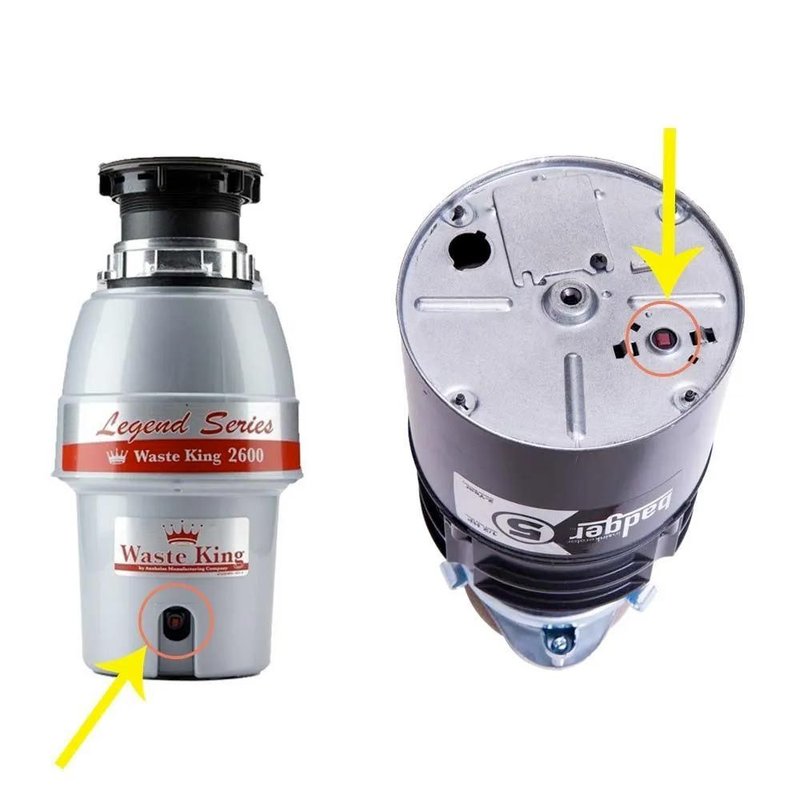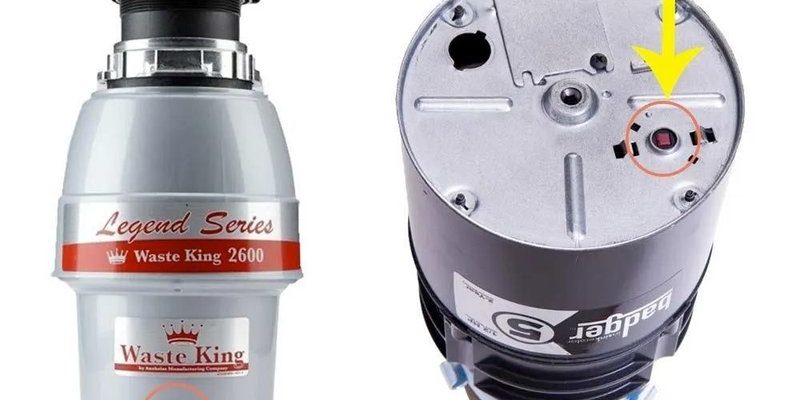
Think of resetting your garbage disposal as giving it a little “time out” so it can get back to its job efficiently. Just as you might reboot your computer when things go awry, your disposal sometimes needs a similar fresh start. The good news is that you can typically handle this issue without calling in a professional, saving both time and money. Let’s walk through the steps to reset your Waste King garbage disposal confidently.
Understanding the OE Error Code
The OE error code can be baffling at first glance. You’re probably wondering, “Why is this happening, and what does it mean for my trusty kitchen helper?” Simply put, this error code signifies an overload. It’s like when you put too many clothes in a washing machine and it struggles to do the job. Your garbage disposal has likely ingested too much food waste at once or encountered a material that’s giving it a hard time, causing it to overwork and trip its internal overload protector.
In many cases, this overload is a protective measure, preventing potential damage that could result from overheating. Just like a circuit breaker trips to protect your home from electrical harm, your disposal is safeguarding itself from further issues. Understanding this is crucial because it changes your approach from panic to resolution.
So, what’s causing the overload? Often, it’s large food particles that are tough to grind, like fibrous vegetables or bones, or perhaps some non-food items accidentally fell in. The unit needs to be reset once you’ve cleared these items. This resetting process acts like a magic switch that puts everything back in working order.
Step-by-Step Guide to Reset Your Waste King Disposal
Before diving into the reset process, ensure your safety first. Unplug the unit or switch off the circuit to prevent any accidental activations. Your safety is paramount, just like wearing a helmet before riding a bike.
Now, locate the reset button, which is usually a small red or black button on the bottom or side of the disposal. Picture it as the “restart” button on your computer. Pressing this will reset its internal overload protector. If you don’t see it immediately, check your user manual for guidance specific to your model.
Once the reset button is found, press it in firmly but gently. You’ll feel it click into place. This tactile feedback signifies that the overload protector is reset, akin to turning the ignition key that starts your car. After pressing the button, wait a minute or two before testing the unit to allow it to recalibrate. If the button doesn’t stay depressed—it pops back out—an underlying issue might still be present, like a jam. In such cases, it’s time to investigate further.
Clearing Any Potential Jams
If the reset didn’t do the trick, there might be a jam blocking the blades. This situation is comparable to clearing a brush block from a lawnmower—the blades simply can’t spin with something in the way. First, make sure the power is disconnected. It’s always better to be overly cautious than to risk injury.
Look inside the disposal using a flashlight. Carefully remove any visible blockages with a suitable tool like pliers or tongs—never your fingers. Once it’s clear, try pressing the reset button again and attempt to run the disposal. You should hear it hum back to life, ready to tackle the next task.
If it still doesn’t work or you hear a buzzing noise without rotation, you might need to contact a professional. Sometimes, persistent issues require expert intervention.
Preventative Measures to Avoid Future Errors
To keep your Waste King humming happily, think of it as a pet that needs proper feeding. Avoid overwhelming it with bones, fibrous foods like celery, and non-food items. Just like you wouldn’t overload a blender, be mindful of not putting too many hard items at once.
Regular maintenance can also prolong its life. Every few weeks, clean your disposal by grinding down a few ice cubes and occasionally using a disposal cleaner or a mix of baking soda and vinegar. This simple act can help break down build-up, much like how a good facial scrub keeps your skin healthy.
Lastly, running cold water for a few moments before and after using the disposal helps it function optimally and keeps the unit in good condition. It’s like a small warm-up and cool-down for your disposal system.
In summary, with some simple monitoring and occasional maintenance, your Waste King disposal should remain a helpful kitchen ally, ready to tackle the daily grind without flashing that pesky OE error code. If all else fails and you find yourself stuck, reaching out to a professional can save time and ensure the issue is resolved safely.
